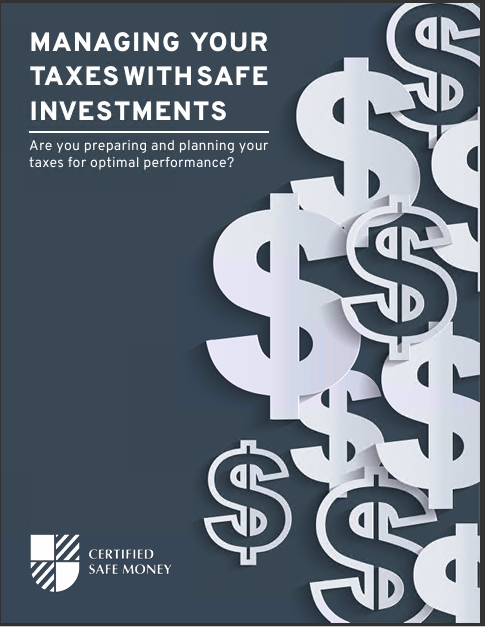Key Takeaways
-
Choosing the wrong annuity or overlooking critical details can significantly reduce your retirement income over time.
-
Avoid common annuity mistakes by thoroughly understanding fees, payout options, and tax implications to protect your long-term financial stability.
1. Not Understanding the Fine Print
When it comes to annuities, details matter—a lot. Far too many people rush into annuity agreements without thoroughly reviewing the fine print. What may seem straightforward initially can quickly become complicated, and hidden clauses can dramatically impact your future income.
Hidden Fees Can Drain Your Savings
You might assume the annuity contract is clear-cut, but fees buried deep within the agreement can erode your retirement savings significantly. These fees can include:
-
Administrative charges
-
Rider fees
-
Withdrawal penalties
Always request full disclosure from the provider before signing anything. Clarify all fees and penalties upfront to ensure they align with your retirement strategy.
Surrender Charges: Long-Term Costs You Didn’t See Coming
Most annuities include surrender charges that penalize early withdrawals, usually within the first 5-10 years. If you need cash unexpectedly and you’re still within this surrender period, you could lose a substantial percentage of your invested money. Knowing the exact duration and percentage of surrender charges helps you avoid costly surprises.
2. Choosing the Wrong Type of Annuity
Selecting the right annuity type for your retirement goals can be challenging, but choosing incorrectly can have lasting consequences. There are primarily two categories you should know:
Immediate vs. Deferred Annuities
-
Immediate annuities start paying income almost instantly (usually within a year), making them ideal if you’re already retired or close to it.
-
Deferred annuities grow tax-deferred until you choose to start withdrawals later, making them suitable if you have more years until retirement.
Picking an immediate annuity too early might lock you into lower payments, while delaying too long on a deferred annuity might reduce the benefits of compound growth.
Fixed vs. Variable Annuities
-
Fixed annuities provide predictable payouts, ideal if you want guaranteed income without market risks.
-
Variable annuities offer the potential for higher returns linked to market performance, but also carry higher risk.
Selecting a variable annuity when your risk tolerance is low or a fixed annuity when inflation is rising rapidly can adversely affect your income stability over time.
3. Incorrectly Timing Your Payouts
Timing your annuity payouts is crucial for maximizing your retirement income. If you start payouts too soon, you may receive smaller monthly payments. Conversely, delaying payouts might yield higher monthly income but reduce the overall period you benefit.
Early Withdrawals: Smaller Checks for Life
Starting annuity payments at an earlier age often means a reduced monthly benefit. Providers calculate payments based on life expectancy, so initiating payouts early can result in permanent income reductions.
Waiting Too Long: Fewer Years to Benefit
On the other hand, postponing payments too long might not give you enough time to fully enjoy your investment. Balancing your financial needs and life expectancy is vital. Consider your health, financial situation, and family history to determine the optimal payout age.
4. Ignoring Inflation Protection
Inflation silently erodes your purchasing power over time. Ignoring inflation protection in your annuity could leave you with significantly less buying power as retirement progresses.
Inflation’s Silent Impact
Even modest inflation rates, averaging around 3% annually, can drastically reduce your annuity’s real value over 20 or 30 years. What seems sufficient today might barely cover basic living expenses two decades from now.
Inflation Riders: Worth the Cost?
An inflation protection rider can adjust your payments annually, aligning them with inflation rates. While adding this rider typically costs extra, it helps preserve your standard of living during retirement. Consider your expected retirement duration when evaluating whether this additional cost is justified.
5. Overlooking Tax Implications
Many annuity buyers underestimate how taxes will impact their retirement income, potentially causing unexpected reductions in cash flow.
Tax-Deferred Doesn’t Mean Tax-Free
Annuities offer tax-deferred growth, meaning taxes aren’t due until you start receiving payments. However, withdrawals from annuities are taxed as ordinary income, potentially pushing you into a higher tax bracket during retirement.
Impact on Social Security and Medicare
Large annuity payouts can inadvertently trigger higher taxes on your Social Security benefits or increased Medicare premiums, reducing your overall retirement income. Proper tax planning with annuities involves considering how payouts interact with other retirement income sources.
How to Avoid These Costly Annuity Mistakes
Now that you’re aware of these common pitfalls, here are actionable steps you can take to safeguard your retirement income:
-
Educate Yourself: Understanding annuity fundamentals is key. Take time to learn about various annuity types, their fees, payout options, and tax implications.
-
Seek Independent Advice: Consulting with a financial advisor who doesn’t have a vested interest in selling you a specific product can help ensure unbiased guidance.
-
Compare and Contrast: Always compare multiple annuity products before settling on one. Look at fee structures, riders, payout terms, and provider stability.
Taking these proactive steps can significantly protect your retirement nest egg and help you avoid regrets down the line.
Making the Most of Your Annuity Investment
Maximizing your annuity’s potential is all about planning ahead and continuously evaluating your financial situation. Here’s how to keep your investment optimized:
-
Regularly Review Your Contract: Conditions change, markets fluctuate, and personal situations evolve. Review your annuity contract every few years to ensure it still aligns with your financial goals.
-
Consider Laddering: Using multiple annuities with staggered payout periods can offer a balance of immediate income, future growth, and protection against market volatility.
-
Balance with Other Investments: Never put all your eggs in one basket. Combining annuities with other investments, such as stocks, bonds, and real estate, can create a balanced retirement portfolio.
These strategies help maintain financial flexibility and ensure you have income when and how you need it.
Securing Your Retirement Income for the Long Haul
Avoiding these annuity mistakes is about more than protecting your finances—it’s about securing a comfortable, stress-free retirement. Each decision you make regarding annuities impacts your financial security in retirement, so proceed carefully and thoughtfully.
With careful planning, regular reviews, and clear understanding of your annuity’s terms, you can avoid costly pitfalls and enjoy reliable retirement income throughout your golden years.












